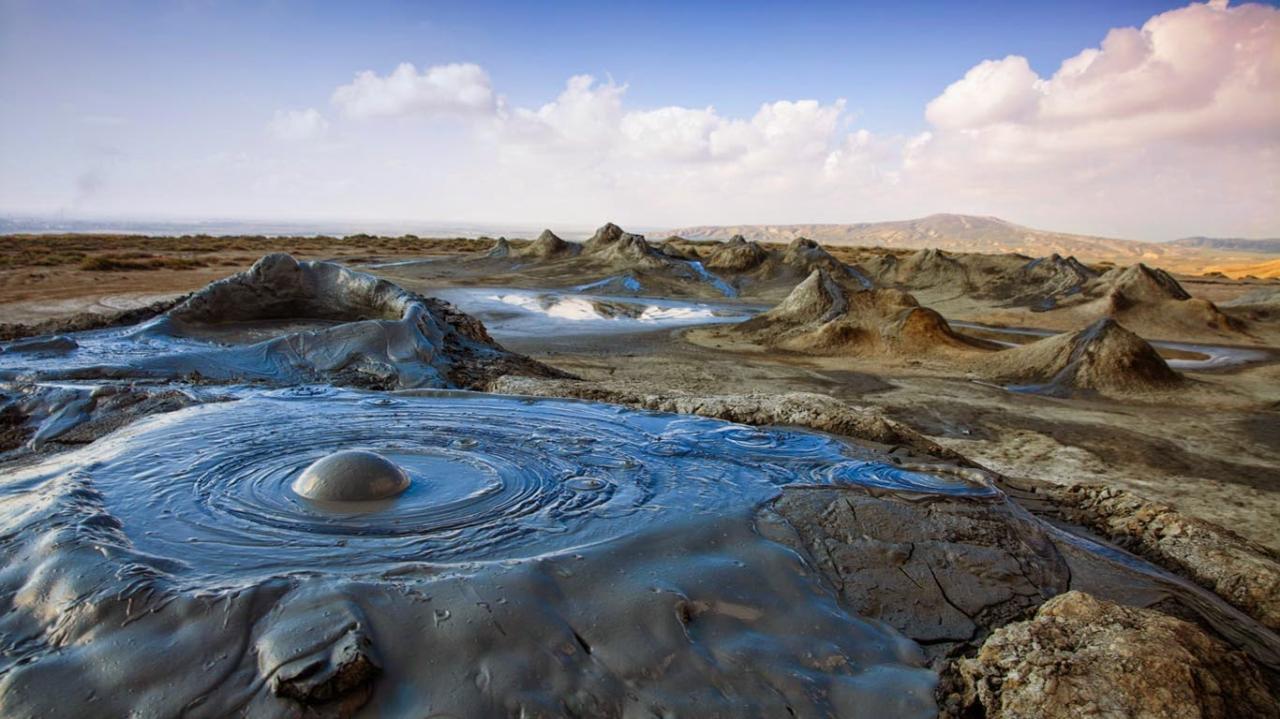
-By LamanIsmayilova
Source https://www.azernews.az/nation/153475.html
Mud volcanoes?
Mud on Mars flows like lava does on Earth, so some features on the Red Planet that look like regular volcanoes may actually spew mud. Researchers found that the surface of the mud froze quickly, but this protected the interior of the flow, which could then continue to creep forward beneath the frozen shell.
Mud volcanoes may spew on Mars, scientists say. Conical hills on Mars may be evidence of mud volcanoes, “scientists say.”
Scientists just don’t know enough about how mud moves on the Red Planet, which is very cold and has an atmospheric pressure 150 times lower than that of Earth
If it is in mars why it is relevant to earth?
Spewing out material from deep underground, geological structures on Mars thought to be mud volcanoes could give scientists the clues they need to determine if life exists, or ever existed, on the Red Planet. If life does – or did – exist on Mars, signs of such life might well be found in a region in the northern plains called AcidaliaPlanitia, according to a new study. The region appears to be dotted with what scientists believe are geological structures known as mud volcanoes, spewing out muddy sediments from underground. These sediments might contain organic materials that could be bio signatures of possible past and present life.
Here’s the reason!
“If there was life on Mars, it probably developed in a fluid-rich environment,” said lead author Dorothy Oehler, a research scientist at the Astromaterials Research and Exploration Science Directorate at NASA’s Johnson Space Center. “Mud volcanoes themselves are an indicator of a fluid-rich subsurface, and they bring up material from relatively deep parts of the subsurface that we might not have a chance to see otherwise.”
In a study published in the August issue of Icarus, Oehler and her co-author Carlton Allen mapped, for the first time, more than 18,000 of these circular mounds. Their estimate is that more than 40,000 mud volcanoes could be found in that region if the mapping continued.
Mud volcanoes in details?
Mud volcanoes are geological structures in which a mixture of gas, liquid and fine-grained rock (or mud) is forced to the surface from several meters or kilometers underground. On Earth, mud volcanoes have specific significance to the oil industry. Those found on land have been found to play a significant role in predicting petroleum reservoirs. Offshore, they can also be a “huge drilling hazard,” according to Oehler, because the earth around a mud volcano is unstable and the activity inside is somewhat unpredictable. It is difficult to predetermine how much mud will surface and whether the process will be a quiet one or an explosive one.The size of mud volcanoes can range up to about ten of kilometers in diameter and several hundred meters in height. The mud flows in an upward direction because the muddy mixture is more buoyant than the surrounding rocks.
Role of Mars exploration program in this?
One of the major goals of the Mars exploration program is to try to understand if life ever evolved on the planet. In that hunt, astrobiologists are searching for biosignatures that would indicate the presence of extraterrestrial life. While the surface of Mars is thought to be inhospitable to life, microbial life possibly could exist underground. Mud volcanoes bring materials from great depths to the surface, providing samples from deep inside the planetary body that, on a place like Mars, would otherwise be completely inaccessible to scientists.
Meanwhile, DrOehler and her colleagues are hoping to continue analyzing the MRO imagery to provide further evidence that the circular structures in Acidalia are in fact mud volcanoes. They plan on analyzing their distribution on the surface, and how the shapes of the different structures vary. This analysis could provide more information about the subsurface conditions in the Acidalia region.
Who is Dr Oehler?
Dr. Dorothy Z. Oehler is a planetary geologist and Precambrian paleontologist. She is mainly interested in seeking ways to identify biosignatures of potential extraterrestrial life.
This includes two lines of research:
- Establishing new criteria for identifying bona fide biosignatures of fragmentary remains of primitive life forms.
- Usingfacies prediction to prioritize habitable sites that may preserve remnants of potential life on Early Mars.
Source – https://mars.nasa.gov/people/profile/?id=22824
Fun fact – Mars is home to the tallest mountain in the solar system. Olympus Mons, a shield volcano, is 21km high and 600km in diameter. Despite having formed over billions of years, evidence from volcanic lava flows is so recent many scientists believe it could still be active.